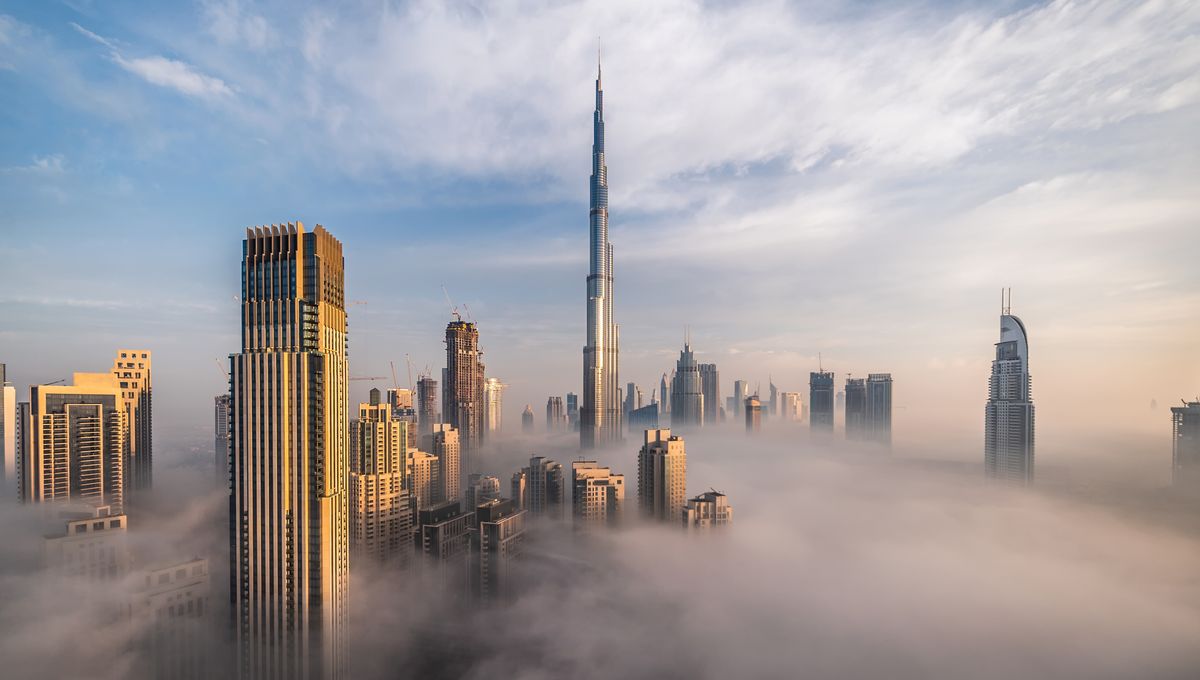
In the hyper-arid deserts of the United Arab Emirates (UAE), water is scarce but sunshine is bountiful. The oil-rich nation currently uses a small army of cloud-seeding drones and aircraft to ease their water woes, but scientists have recently proposed another way to promote precipitation in the region: gigantic solar farms.
In a new study, researchers at the University of Hohenheim in Germany show that vast arrays of solar panels have the potential to foster rainclouds above the UAE and bring much-needed water to tens of thousands of people.
The logic behind the idea goes like this: dark-colored solar photovoltaic panels absorb heat and, if large enough in scale, can create “artificial heat islands” in local areas. With the help of the UAE’s sea breeze, the warmth could be drifted upwards via convection and promote cloud formation in the skies.
Using computer models, the team ran several simulations to see how big the solar farm would need to be to have the desired effect.
The modeling suggested a 10-kilometer square (3.8 square miles) field of black solar panels would have “very little impact” on rainfall. Upwards of this though, larger solar farms could potentially produce substantial downpours.
A 20-square-kilometer (7.7 square miles) solar panel field would create around 570,000 cubic meters each day of rain. If this occurred for just 10 days in a year, it could provide enough water for over 31,000 people annually.
As for a 50-square-kilometer (19 square miles) solar field, this would create enough rain to provide 125,000 extra people with water each year.
“Some solar farms are getting up to the right size right now. Maybe it’s not science fiction that we can produce this effect,” Oliver Branch, lead study author and climate scientist at the University of Hohenheim, told Science.
It’s an extremely creative solution, but it might not work for every region of the world that’s facing water stress. Another study in 2020 investigated a similar idea for the Sahara Desert in Africa. Although it would increase rainfall in the local area, it would have a profound knock-on effect across the globe, causing droughts and forest degradation in the Amazon, as well as temperature increases and sea-ice loss in the Arctic.
This latest proposal is effectively a form of geoengineering, the deliberate manipulation of Earth’s natural processes to tweak its climate and weather conditions. Many believe this kind of meddling could be a viable solution to the planet’s climate crisis – but it’s a risky business.
As the 2020 Sahara study shows, interfering with complex systems, such as Earth’s climate, can easily have unforeseen consequences and disastrous ripple effects. This latest study about the UAE didn’t identify any such impacts beyond the surrounding region, although it’s certainly something scientists need to keep an eye on in future research.
The new study is published in the journal Earth System Dynamics.
Source Link: Giant Solar Farms Could Bring Much-Needed Rainclouds To The UAE